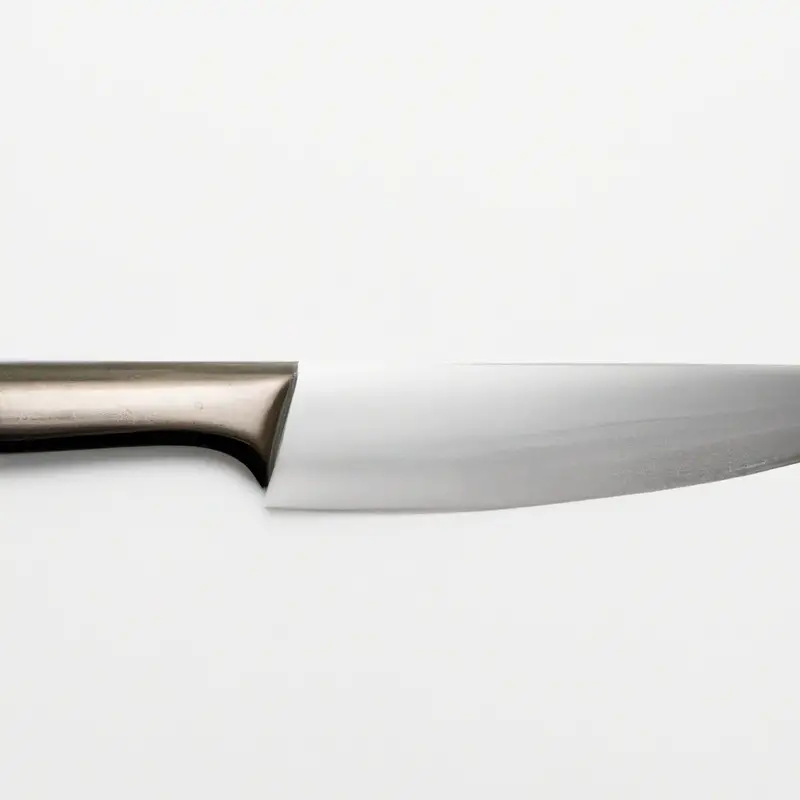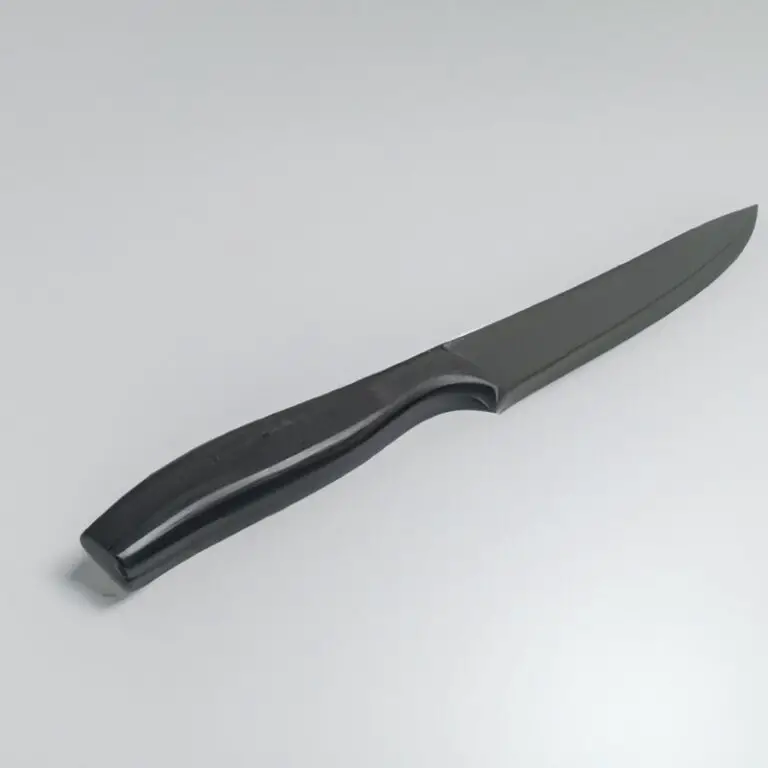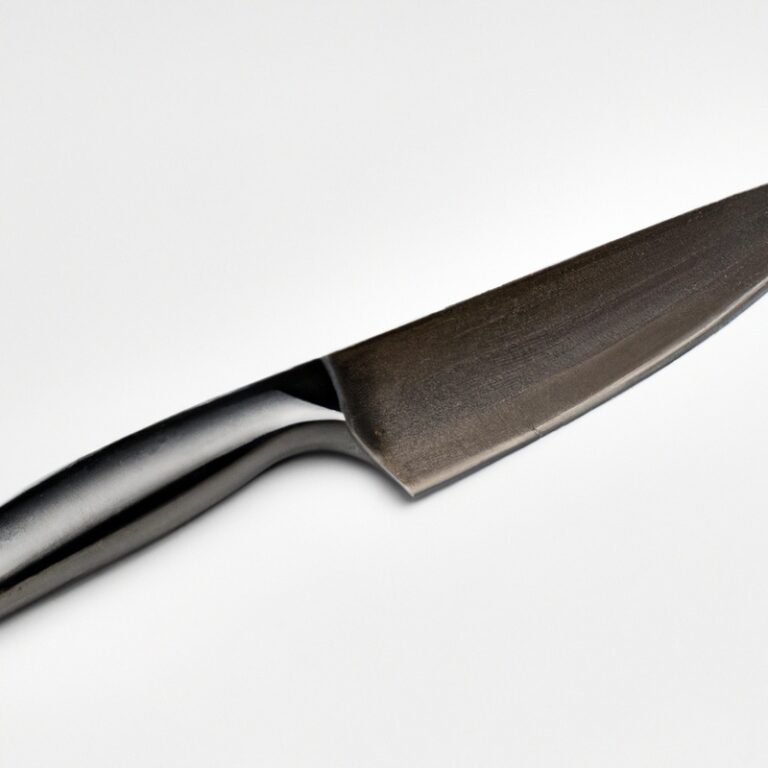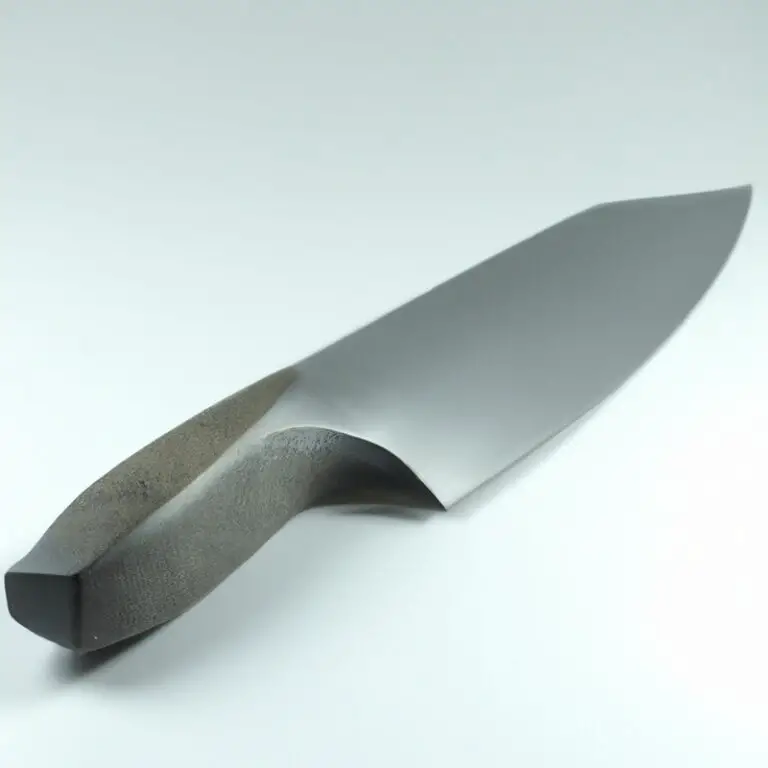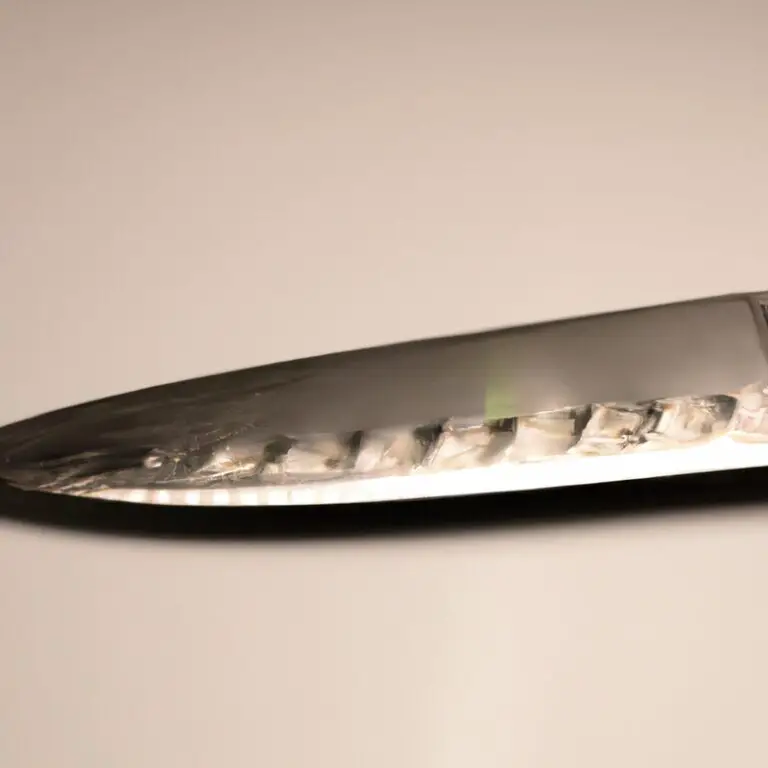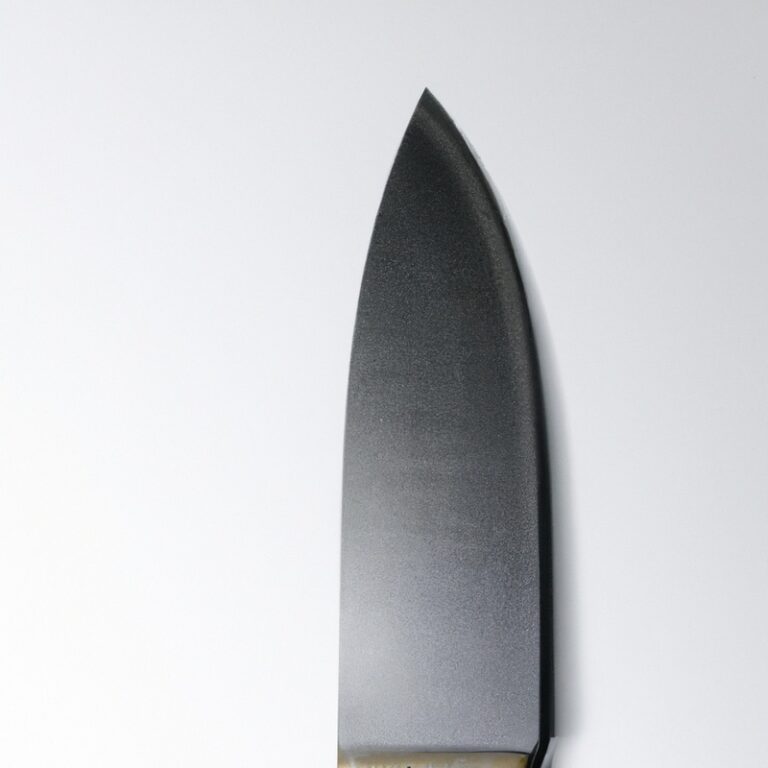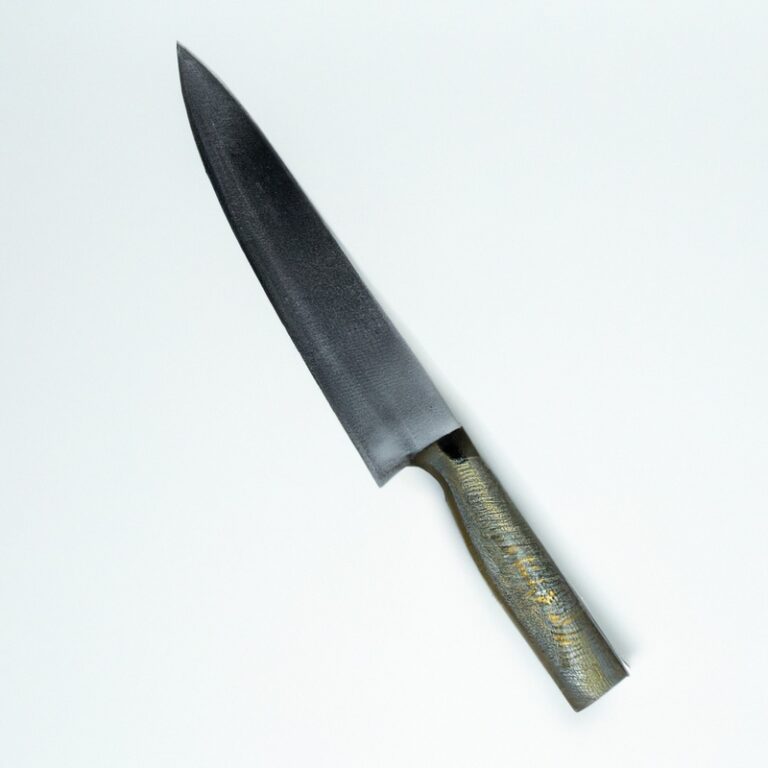What Are The Recommended Cutting Surfaces For a Gyuto Knife? Enhance Your Culinary Skills!
Are you looking to make the most out of your Gyuto knife? Then, it’s essential to carefully consider the cutting surface.
Not all cutting boards are created equal, and choosing the wrong one could result in dulling your knife’s edge or even damaging the blade.
As a seasoned chef, I’ve tested various surfaces and techniques to find the best options for Gyuto knives. In this article, I’ll share my insights on the best cutting surfaces for Gyuto knives, including wooden and bamboo boards, end-grain cutting surfaces, and the do’s and don’ts of plastic cutting boards.
Plus, I’ll explain why you should avoid ceramic and glass boards and never use metal surfaces.
| Surface | Recommended? | Reason |
|---|---|---|
| Ceramic | NO | Fragile and may damage the knife’s edge |
| Glass | NO | Very hard surface that will dull the knife’s edge quickly |
| Marble | NO | Hard surface that can damage the knife’s edge and leave scratches |
| Bamboo | YES | Naturally hard and can withstand the blade without dulling it |
| Plastic | YES | Gentle on the knife’s edge and easy to clean |
| Wood | YES | Naturally hard and can absorb some of the impact, preventing damage to the knife’s edge |
Understanding the importance of the cutting surface for a Gyuto knife
The cutting surface that you use with your Gyuto knife can significantly impact its performance. Using the wrong surface can result in premature dulling of the blade and can even damage it.
Wooden cutting boards are the preferred choice for Gyuto knives as they are gentler on the blade compared to other surfaces like ceramic, glass, or metal.
End-grain cutting boards are a particularly excellent option as they are soft and absorbent, reducing damage to the blade. Additionally, it is essential to oil your cutting board regularly to prevent it from drying out and cracking.
Plastic cutting boards can also be used, but it’s crucial to avoid thin and cheap plastic boards as they can damage the blade.
Bamboo cutting boards are another option that’s becoming increasingly popular as they offer similar benefits to wooden boards. However, it’s important to note that ceramic and glass cutting boards should be avoided as they are too hard and can damage the knife’s edge.
Finally, proper cleaning and sanitation of the cutting surface is crucial to avoid contamination and maintain the knife’s performance.
Wooden cutting boards: Why they are the preferred choice for Gyuto knife
Wooden cutting boards are the preferred choice for Gyuto knives due to their durability, superior cutting surface, and ability to preserve the knife’s sharpness. Wood fibers are more gentle on the blade, reducing the chances of dulling or chipping.
Additionally, wood is naturally antimicrobial, meaning it inhibits the growth of bacteria, making it a safer choice for food preparation.
Moreover, wooden cutting boards make a great surface for chopping, slicing, and dicing, as they are soft enough to avoid dulling the knife’s edge but hard enough to provide a stable cutting surface. As such, when looking for the best cutting surface for your Gyuto knife, consider investing in a high-quality wooden cutting board.
The benefits of using bamboo cutting boards with Gyuto knives
Bamboo cutting boards offer several benefits that make them an ideal choice for using with Gyuto knives. They are lightweight, durable, and have a natural antibacterial property that helps prevent the growth of bacteria.
Bamboo is also less porous than other woods, which means it absorbs less moisture and is less likely to warp or crack.
Additionally, bamboo is eco-friendly and sustainable, making it a better option compared to other types of wood. When it comes to using Gyuto knives, bamboo cutting boards are a great choice because they are gentle on the knife’s edge.
The softer surface of bamboo means that the blade does not undergo excessive wear and tear, increasing its lifespan.
Moreover, the softness of bamboo makes it easy to cut through, which ensures that the blade doesn’t dull quickly. Another benefit of using a bamboo cutting board with Gyuto knives is that it is easy to clean and maintain.
Unlike other wood cutting boards, bamboo boards can be washed with soap and water without the risk of warping.
They also do not retain unpleasant odors, which can be an issue with plastic cutting boards. Overall, bamboo cutting boards are an excellent choice for use with Gyuto knives.
They are affordable, eco-friendly, and provide a durable, non-slip surface.
By using a bamboo cutting board, chefs can ensure their Gyuto knives maintain their sharpness and longevity while preparing food.
Plastic cutting boards and Gyuto knives: The do’s and don’ts
Plastic cutting boards can be a cost-effective and lightweight option for a Gyuto knife, but they are not without their limitations. Here are some do’s and don’ts when using plastic cutting boards with a Gyuto knife: Do:
- Choose a high-quality, thick plastic cutting board that won’t dull your knife’s edge as quickly as a thin board.
- Make sure the cutting board is securely placed on a stable surface to avoid slipping while cutting.
- Wash the cutting board thoroughly after each use with hot soapy water or run it through the dishwasher.
- Replace the plastic cutting board when it becomes excessively worn or noticeably warped.
Don’t:
- Use a plastic cutting board that is too thin or flimsy, as this can cause the board to warp and become uneven over time.
- Use a plastic cutting board that is heavily grooved or scarred, as bacteria can collect in these crevices and contaminate your food.
- Chop hard or frozen foods on a plastic cutting board, as this can cause the board to crack or chip.
- Put a hot pot or pan directly on a plastic cutting board, as this can cause warping or melting.
Overall, while plastic cutting boards can be a practical option, they are not as durable or long-lasting as some other materials and may need to be replaced more frequently. Always follow manufacturer instructions when caring for your plastic cutting board and stay aware of any signs of wear or damage.
Avoiding ceramic cutting surfaces with Gyuto knives
It is recommended to avoid using ceramic cutting surfaces with Gyuto knives. Ceramic is harder than steel, which can lead to the dulling of the knife’s edge.
Additionally, ceramic surfaces can cause chipping and damaging of the blade’s edge.
Therefore, it is best to use wooden, bamboo, or plastic cutting boards with your Gyuto knife.
How end-grain cutting boards can enhance the performance of a Gyuto knife
End-grain cutting boards are often recommended for use with Gyuto knives because they are gentle on the knife’s edge and can actually enhance its performance. These cutting boards are made by cutting wood blocks into small pieces and then gluing them together with their grain facing upwards.
This creates a surface that is gentle on the knife, as the blade’s edge passes between the wood fibers instead of against them.
As a result, the knife is less likely to become dull or damaged, and it can retain its sharpness for a longer period. End-grain boards also have a self-healing property, meaning that tiny cuts or grooves made by the knife will be closed up by the wood fibers, keeping the surface smooth and clean.
Furthermore, end-grain cutting boards are durable and can withstand repeated use.
Overall, using an end-grain cutting board with a Gyuto knife can help to maintain a sharp edge and prolong the life of the knife.
Oiling cutting boards: A crucial step in maintaining a Gyuto knife
To maintain the sharpness and longevity of your Gyuto knife, oiling your wooden cutting board is a crucial step. Regularly applying food-grade mineral oil to the board prevents it from drying out, warping or cracking.
When the board is well-oiled, it forms a protective barrier that keeps moisture away from the board’s surface.
This means your knife will have a smooth and consistent ride without the risk of chipping or dings in the blade. Apply the oil to a clean and dry surface, following the manufacturer’s instructions, and let it soak for a few hours before wiping off any excess.
Remember to avoid using vegetable or olive oil as they are prone to turning rancid and can affect the taste of your food.
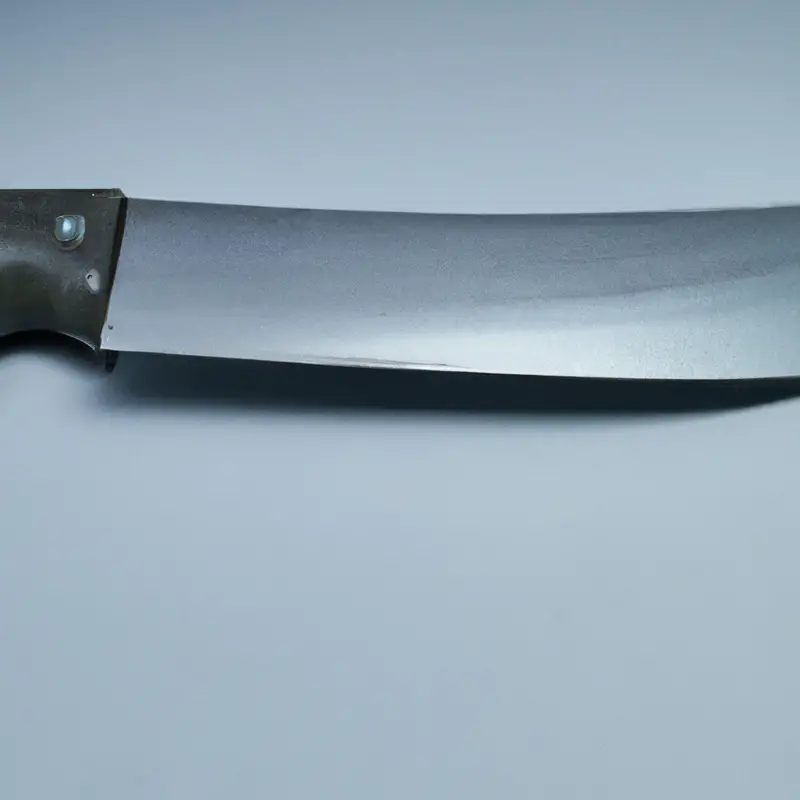
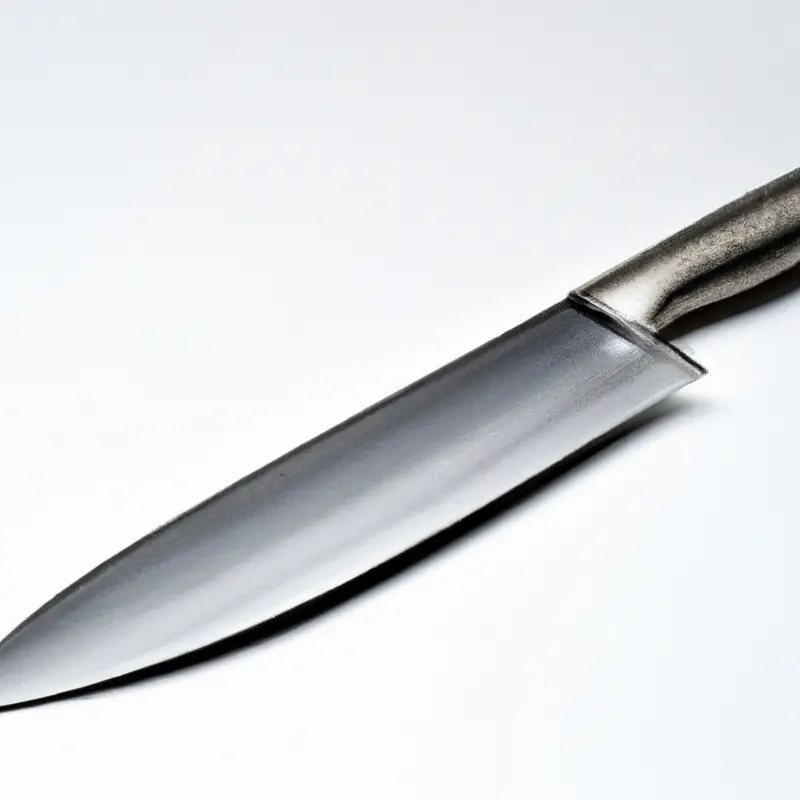
The impact of using glass cutting boards on a Gyuto knife’s edge retention
Using a glass cutting board can significantly impact a Gyuto knife’s edge retention. Due to the hardness of the glass, it can quickly dull the blade.
Glass cutting boards also do not absorb any shock, causing the knife to absorb all impact, leading to decreased edge retention.
Additionally, cutting on glass can cause micro-abrasions on the edge, making the blade prone to chipping, which can weaken the blade over time. Therefore, it’s best to avoid using glass cutting boards with Gyuto knives to prolong their sharpness.
The disadvantages of using metal cutting surfaces with Gyuto knives
Using metal cutting surfaces with Gyuto knives can cause considerable damage to the knife’s blade. The metal-on-metal contact quickly dulls the edge, making it harder to cut through ingredients.
Additionally, the hard surface can cause micro-chipping on the knife, raising concerns about food hygiene and safety.
Metal cutting surfaces also tend to be noisy and may damage the knife’s handle or tip if used too aggressively. As a result, it is crucial to avoid metal cutting surfaces when using Gyuto knives to preserve their performance and longevity.
Instead, it is recommended to use softer and safer options such as wood, bamboo, or plastic cutting boards that are less likely to damage the knife’s blade or tip.
The importance of proper cleaning and sanitation for Gyuto knives and cutting surfaces
Proper cleaning and sanitation are crucial for maintaining the sharpness and longevity of a Gyuto knife and its cutting surfaces. Failure to clean the knife after each use increases the risk of bacteria buildup, which could lead to food contamination.
Additionally, dirty cutting surfaces could cause cross-contamination, affecting the taste and quality of the food you prepare.
To avoid these issues, rinse the knife and cutting surface with warm water and dish soap after each use, then dry them thoroughly. Avoid using abrasive sponges or harsh chemicals that could damage the knife and cutting surface.
By ensuring the cleanliness and sanitation of your Gyuto knife and cutting surface, you’ll not only improve the quality and taste of your food, but also extend the knife’s lifespan.
Final Verdict
Choosing the right cutting surface is imperative for maintaining the sharpness and longevity of your Gyuto knife. Wooden and bamboo cutting boards are the preferred options, while plastic cutting boards should be avoided unless regularly sanitized.
Ceramic, glass, and metal cutting surfaces are not recommended due to their potential to damage the knife’s edge.
End-grain cutting boards can enhance the knife’s performance while oiling the cutting surface is a crucial step in maintaining the knife’s edge. To ensure optimal cutting performance and hygiene, it’s essential to clean and sanitize both the cutting surface and the Gyuto knife regularly.
By following these guidelines, you can guarantee your Gyuto knife’s performance, durability, and overall value, making it a worthwhile investment that will last a lifetime.

